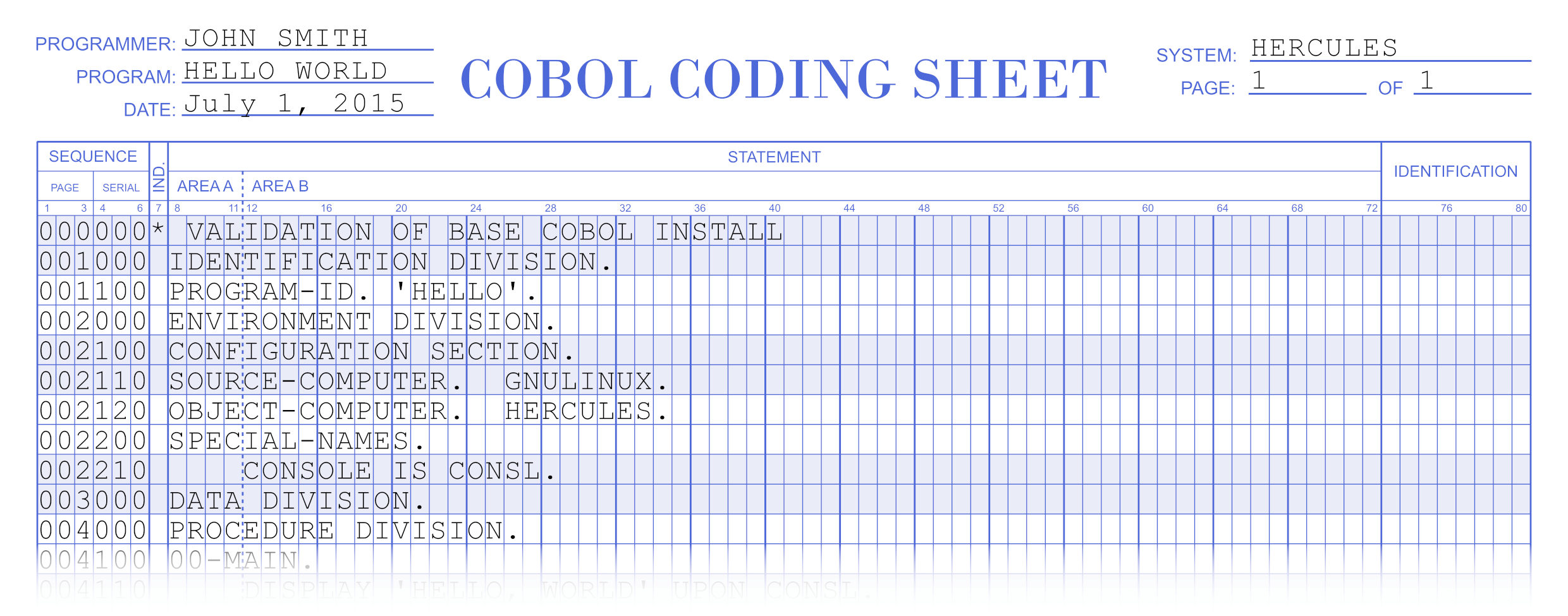“Coding sheet” is an old-timey programming term.
Nowadays, programmers type our programs directly into our computers ourselves, but that wasn’t the case a few decades ago when many computers were programmed using punch cards. Even back then, programmers often didn’t punch their own cards either: instead, they wrote their programs on a coding sheet.
A coding sheet was a paper form (also called a “coding form”) that contained a grid of rows and columns where the programmer would write the program, one character in each box. A card punch operator would then copy the content of the coding sheet onto a deck of punch cards; each row of the grid corresponded to one punch card, and each column to the matching column in each card.

Many programming languages restricted what could go in each column (for example, COBOL dedicated columns 1-6 to a line number), so the coding sheets for a particular language had labels, lines, and shading to help the programmer put the appropriate characters in the correct columns.
Nowadays, the term “coding sheet” is nearly forgotten. Yet, it lives on among COBOL programmers, especially those who work with old mainframe programs. Their punch cards are long gone, replaced with 80-column sequential records on a DASD; however, many of those programmers still write their programs on coding sheets, albeit electronic ones.
And, of course, “Coding Sheet” is the name of my weekly newsletter about software engineering. See the home page for details!